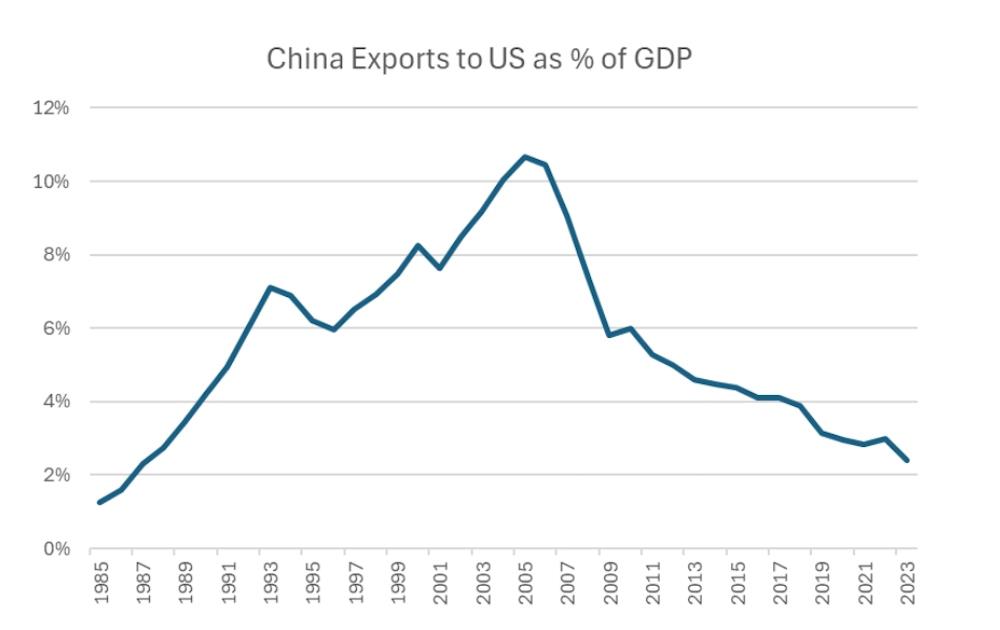First off, any analyst, commentator or pundit that treats what's going on as static is going to be in error, perhaps by huge amounts. It's not a decision tree but rather a four-dimensional (including time) matrix: If the U.S. government does this, China does this, this and this and then the American importers and end users do this, this and this. With substitution effects at all levels the permutations spin off into complexity that requires a supercomputer just to tell you what the possibilities are, much less the probabilities.
The opposing parties are almost better off hiring some old-school commodity traders from Chicago and
America's industries, including defense, outsourced tens of thousands of key parts to China during the past 20 years. US manufacturers don't produce capacitors, accumulators, pumps, compressors, switching equipment and other essential equipment for US electrical utilities.
None of these are hard to manufacture or expensive when manufactured in volume. But rebuilding industrial capacity for a wide range of critical inputs would be extremely expensive. Key dependencies on Chinese imports make America vulnerable to Chinese retaliation in the event of a trade war.
President-elect Donald Trump has proposed 60% tariffs on Chinese imports, while the US Congress Select Committee on China wants to strip China of its Most Favored Nation trading status, which could lead to tariffs of 100%.
China's exports to the US peaked at over 10% of its GDP (in US dollars) in 2005, but have fallen to just over 2% of GDP today. If trade relations with the US rupture, which side would suffer more? It's hard to reckon with all the variables, but the United States well might well come out worse.
Graphic: Asia TimesAsia Times published the first study showing that China had re-routed a large portion of its exports to the US via third countries (“The Great re-shoring charade,” April 6, 2023).
Since then, the International Monetary Fund, World Bank, Bank for International Settlements and the office of Senator Marco Rubio have published supporting evidence. Vietnam and Mexico now export 25% of their GDP to the United States. As noted, China exports barely over 2%....
....MORE
See:
The great re-shoring charade - Asia TimesApr 6, 2023The great re-shoring charade China's position in global supply chains strengthens as US pretends to 'friend-shore' its imports by David P. Goldman April 6, 2023
Shrinking US CapEx makes re-shoring a charade - Asia Times
Dec 1, 2023 In April 2023, Asia Times released a study of US trade dependencies under the title, "The Great Re-Shoring Charade." We found that the United States imported less from China only because it imported more from countries dependent on Chinese semi-finished goods, components and capital goods. In effect, America's "friend-shoring" partners assembled finished goods out of imported Chinese ...
The U.S. should maybe take the cue and wean itself off Chinese-manufactured medical products and pharmaceuticals to start.
Hexanitrohexaazaisowurtzitane.
